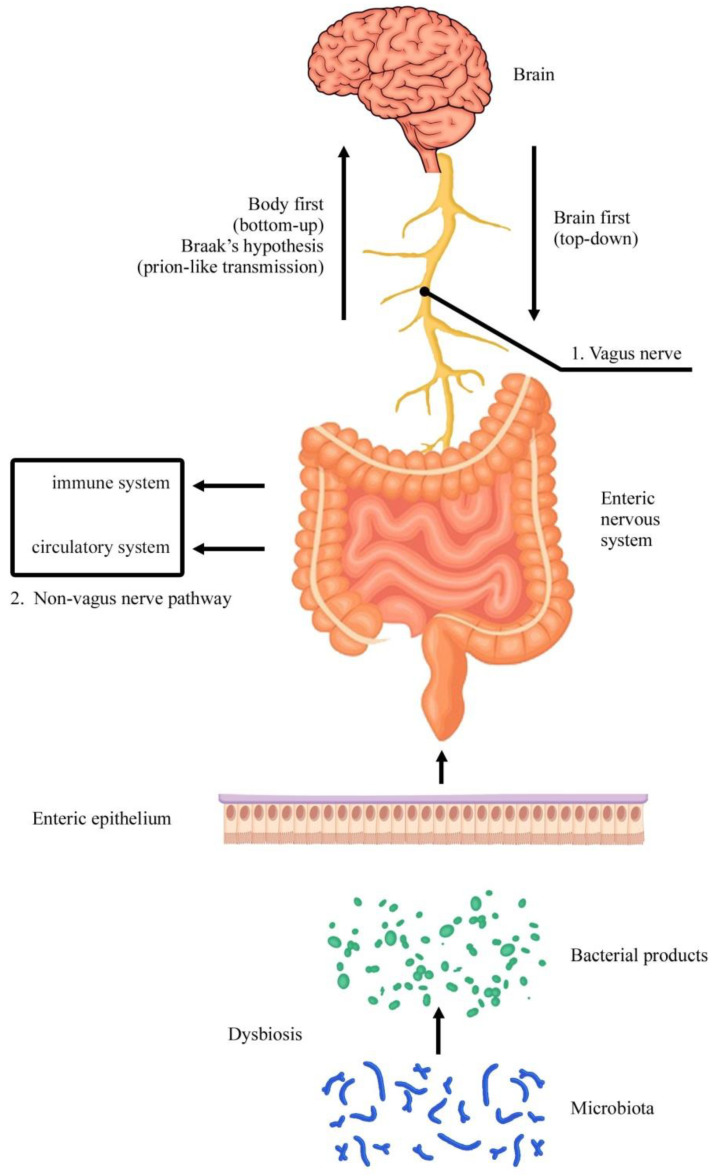Figure 1.
Microbiota–gut–brain axis. Two subtypes of Parkinson’s disease patients have been recognized: a brain-first (top-down) type, where the hallmark of this pathology (α-synuclein) initially appears in the brain with secondary spreading to the peripheral autonomic nervous system; a body-first (bottom-up) type, where the pathology originates in the enteric or peripheral autonomic nervous system and then spreads to the brain. In this case, according to Braak’s hypothesis, neurodegenerative diseases, such as Parkinson’s disease, can recognize a peripheral origin when putative pathogens enter the mucosa of the GI tract, inducing misfolding and aggregation of α-synuclein in the ENS, and finally spreading retrogradely to CNS via vagal preganglionic fibers, up to the dorsal motor nucleus of this nerve and finally other central nervous structures. A prion-like mechanism has also been proposed for misfolded proteins propagation, and different routes have been hypothesized to account for this cell-to-cell spreading, including vagal (1) and non-vagal (immune and circulatory systems) (2) pathways.

